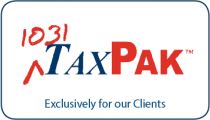You are here
1031Facts › 1031 EXCHANGES vs. Qualified Opportunity Zone Investments › 1031 EXCHANGES vs. Qualified Opportunity Zone Investments1031 EXCHANGES vs. Qualified Opportunity Zone Investments
Error message
Deprecated function: The each() function is deprecated. This message will be suppressed on further calls in _taxonomy_menu_trails_menu_breadcrumb_alter() (line 436 of /home/expert1031/public_html/sites/all/modules/taxonomy_menu_trails/taxonomy_menu_trails.inc).
The Tax Reform Act of 2017 created “Qualified Opportunity Zones” to promote investments in low income communities across the United States. The Qualified Opportunity Fund, or, “QOF,” was created to give investors capital gains tax reduction or elimination to encourage economic growth in specific areas. There are two similarities between QOFs and 1031 Exchanges: 1. they’re both tax-gain deferral strategies (and sometimes even tax elimination!), and 2. the investments must be made within 180 days from the sale of the Old Property. There’s where the similarities end. If a taxpayer decides to invest in a QOF after starting a 1031 Exchange with a Qualified Intermediary, the access to the 1031 proceeds is limited until one of two things happen: 1. If no replacement 1031 property is identified by the investor by the forty-fifth day of the exchange, the funds can be released on the forty-sixth day of the exchange. OR 2. If property WAS identified, and the 1031 Exchanger is past the forty-fifth day, their funds would be released on the 181st day of the exchange.
...the taxpayer needs to review their options carefully before a QOF investment....
1031 Exchanges provide tax benefits like gain deferral and step-up in basis if a taxpayer dies. IRS rules allow for purchases from a related party if: 1) the property is held for two years, 2) the related party seller also does a 1031 exchange, 3) a Qualified Intermediary is used, and 4) replacement real estate is purchased. A 1031 investment allows for debt to be placed on the property and no requirements to hold the property past 12 months to receive long-term capital gain tax treatment on the gain deferral. If a rental property is converted to a primary residence, a proration of the primary residence exclusion may also be available. A QOF investment can eliminate capital gains under some conditions, and no QI is required, but the liquidity of a QOF investment is very limited. The taxpayer would need to invest for the long term of five, seven or ten years to reduce or eliminate long-term capital gains taxes. Benefits of a QOF investment provide the ability for the taxpayer to only invest their capital gain amount from real estate or other long term investments with 180 days of sale. Unfortunately, the taxpayer cannot obtain a debt interest in a QOF. Investments in a QOF can support a pooled fund that invests in multiple assets and can be in the form of a partnership interest or stock interest in a corporation. That partnership or corporation must invest 90% or more in eligible property located in a qualified opportunity zone. These entities must comply with strict reporting to the IRS, and any improvements in the business property purchased must be completed within 30 months. Additionally, the assets cannot be purchased from a related party of the taxpayer. Though there is no step-up in basis if the taxpayer dies, the interest in a QOF investment can be transferred to a surviving spouse, estate or trust with no tax liability under proposed IRS guidelines. One advantage of a QOF investment is the ability to exclude gain from long term capital gains taxation. According to IRS regulations:
On page 11 of Publication 5318 for tax year 2018, “Tax Reform: What’s New for Your Business,” the IRS points out that there is:
While a real estate investor has flexibility and control of their 1031 exchange purchases, a QOF investor would generally not. As with any complicated investment, the taxpayer needs to review their options carefully before a QOF investment. Under current tax regulations, the QOF investment rules end as of December 31, 2026, and it’s not known whether Congress will extend this regulation.





Add new comment